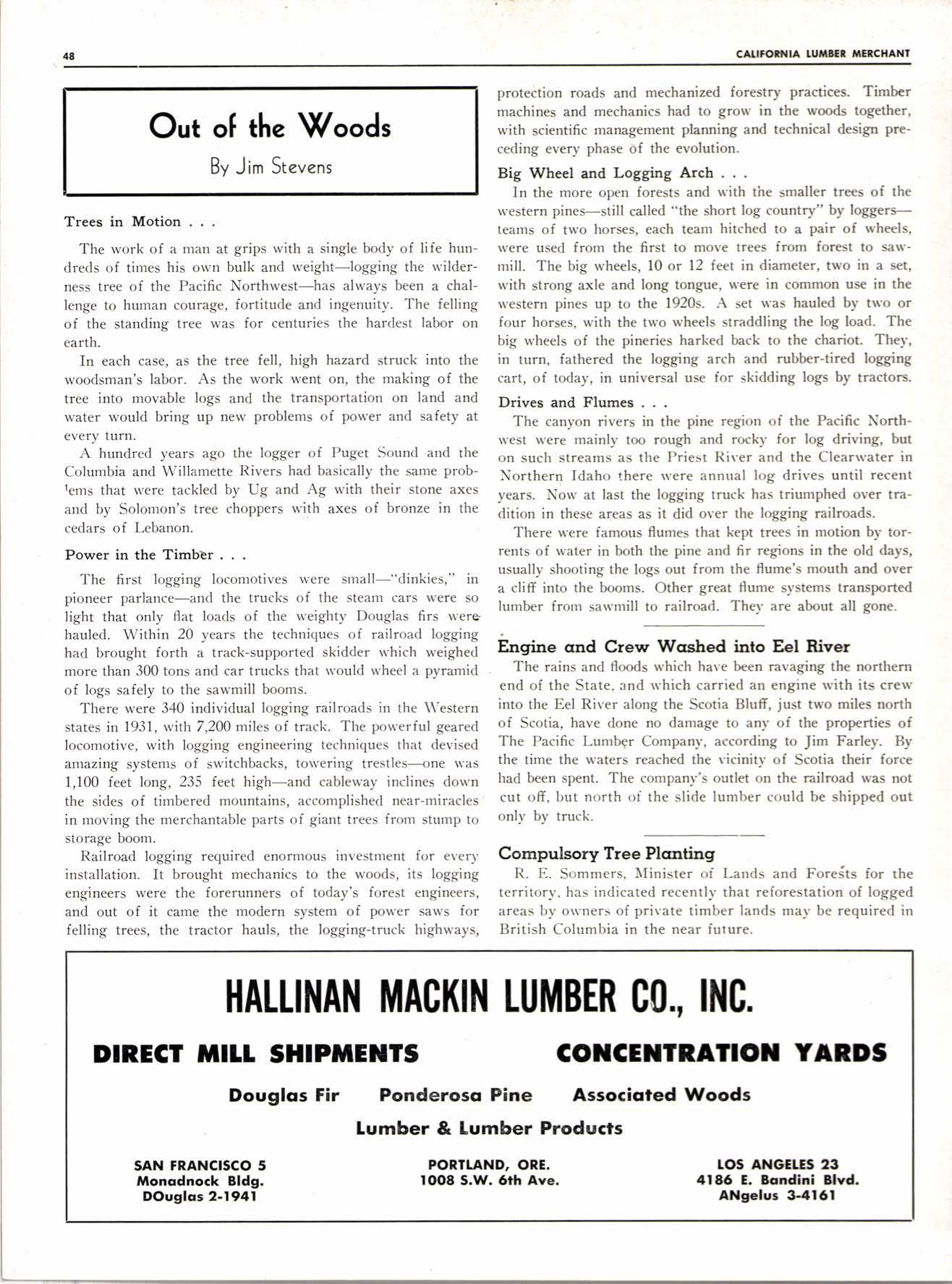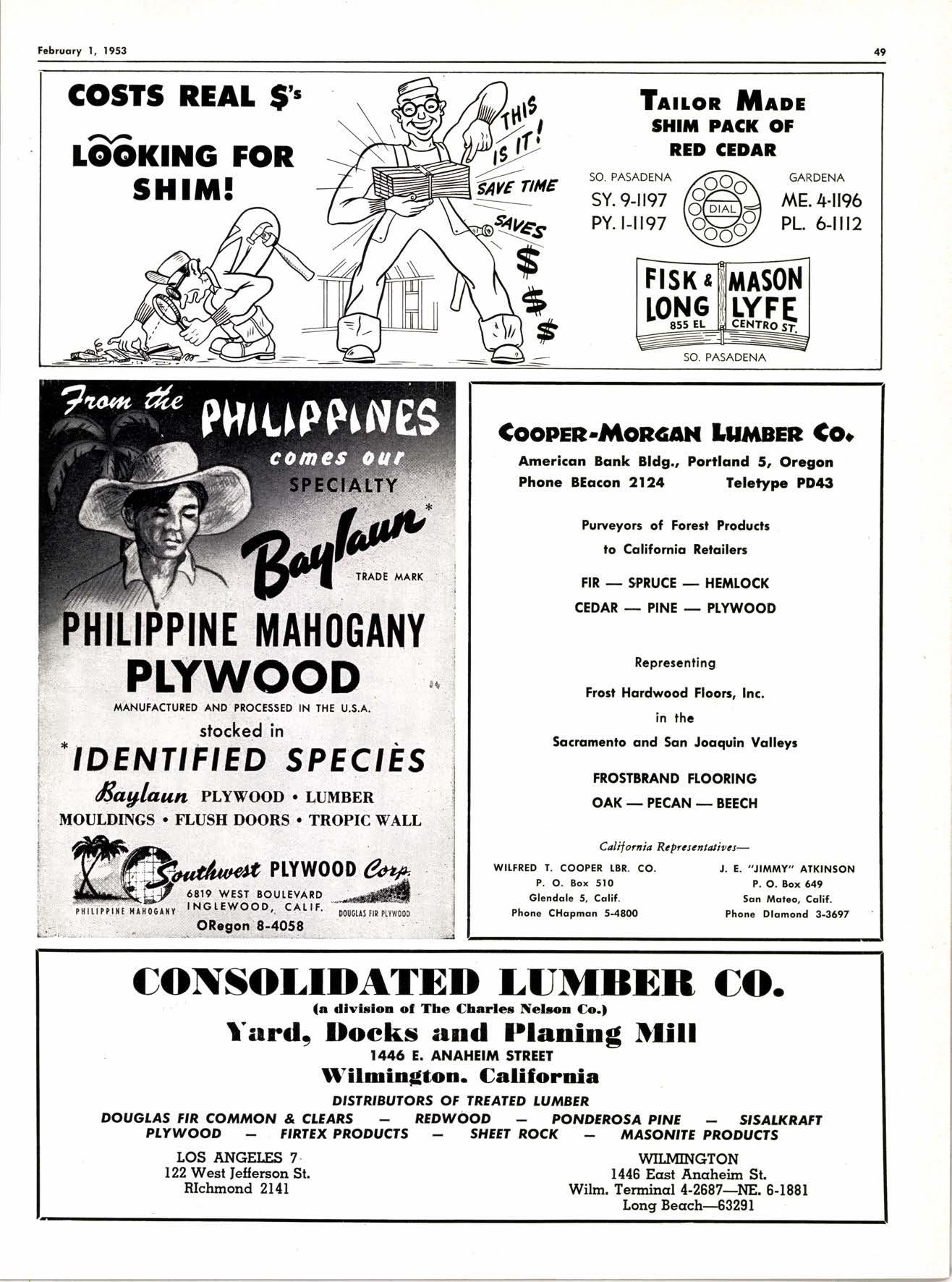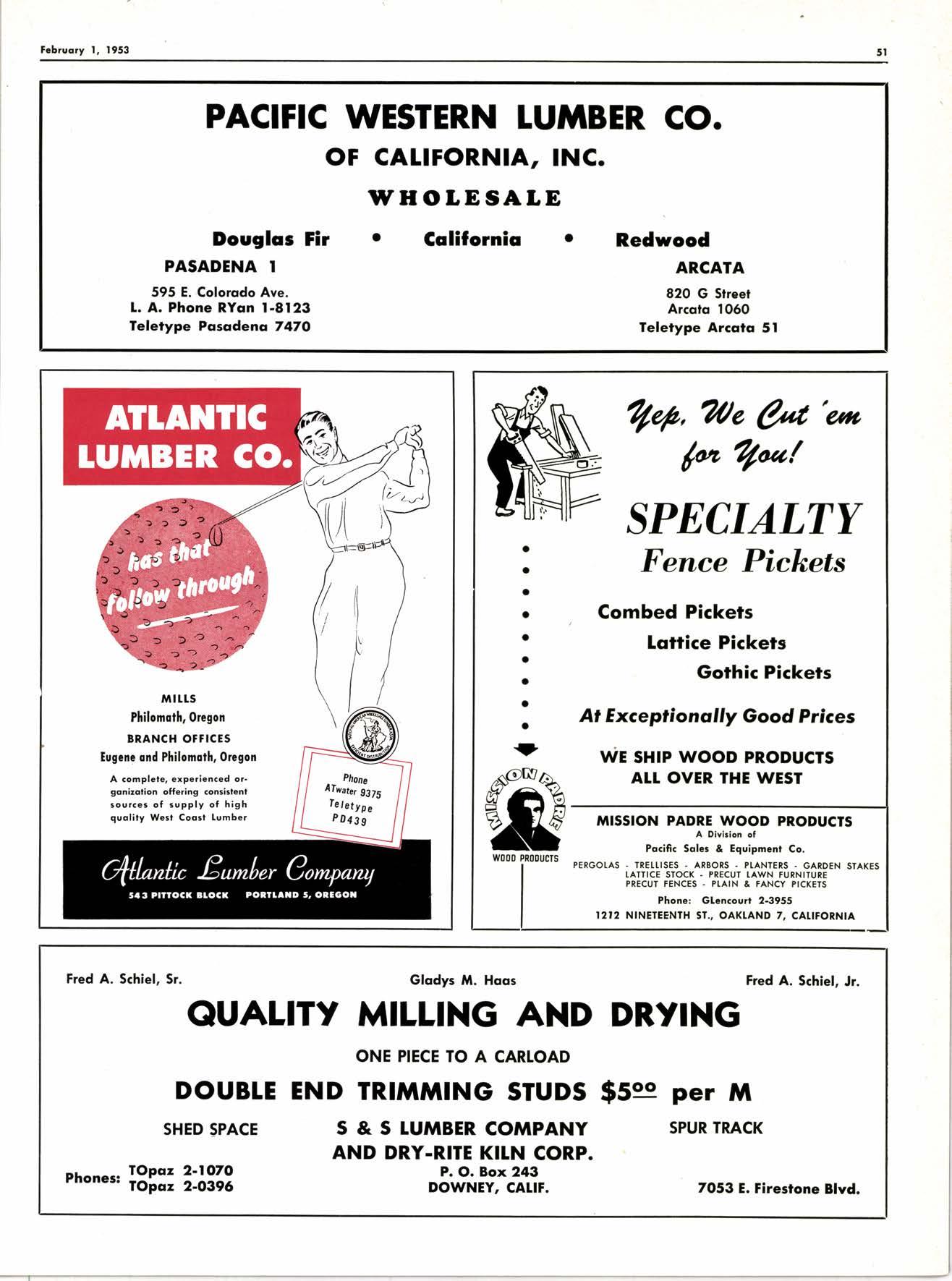
6 minute read
Out of the \(/oods
By Jim Stevens
Trees in Motion
The work of a man at grips with a single body of life hundreds of times his own bulk and weight-logging the wilderness tree of the Pacific Northwest-has always been a challenge to human courage, fortitude and ingenuity. The felling of the standing tree was for centuries the hardest labor on earth.
protection roads and mechanized forestry practices. Timber machines and mechanics had to grow in the woods together, with scientific management planning and technical design preceding every phase of the evolution.
Big Wheel and Logging Arch
In each case, as woodsman's labor. tree into movable water would bring the As tree fell, high hazard struck into the the work went on, the making of the logs and the transportation on land and up new problems of polver and safety at every turn.
A hundred years ago the logger of Puget Souncl and the Columbia and Willamette Rivers had basically the same problen.rs that were tackled by Ug and Ag with their stone axes and by Solomon's tree choppers with axes of bronze in the cedars of Lebanon.
Power in the Timbtr . .
The first logging locomotives 11s1s 51n2ll-"dinkies," in pioneer parlance-and the trucks of the steam cars were so light that only flat loads of the weighty Douglas firs rvere hauled. Within 20 years the techniques of railroad logging had brought forth a track-supported skidder lr'hich weighed more than 300 tons and car trucks that rvould u'heel a pyramid of logs safely to the sawmill booms.
There were 340 individual logging railroads in the \\'estern states in 1931, with 7,200 miles of track. The por,r'erful geared locomotive, with logging engineering techniques that devised amazing systems of switchbacks, torvering trestles-one \ras 1,100 feet long, 235 feet high-and cableu'ay inclines down the sides of timbered mountains, accomplishecl near-miracles in moving the merchantable parts of giant trees frorn stulnp to storage boom.
Railroad logging required enormous investment for everl' installation. It brought mechanics to the woods, its logging engineers were the forerunners of today's forest engineers, and out of it came the modern system of power saws for felling trees, the tractor hauls, the logging-truck highways,
In the more open forests and with the smaller trees of the $estern pines-still called "the short log country" by loggersteams of two horses, each team hitched to a pair of u'heels, rvere used from the first to move trees from forest to sawrnill. The big wheels, l0 or 12 feet in diameter, two in a set, with strong axle and long tongue, were in common use in the u'estern pines up to the 1920s. A set $'as hauled by trro or four horses, with the two r*'heels straddling the log load. The big wheels of the pineries harlied back to the chariot. Thev, in turn, fathered the logging arch and rubber-tired logging cart, of today, in universal use for skidding logs by tractors.
Drives and Flumes . .
The canyon rivers in the pine region of the Pacific NorthNest u'ere mainly too rough and rockl' for log driving, but on such streams as the Priest Rirer and the Cleanvater in Northern Idaho there s'ere annual log drives until recerrt years. Nou' at last the logging truck has triumphed over tradition in these areas as it did over the logging railroads.
There were famous flumes that kept trees in motion by torrents of water in both the pine and fir regions in the old days, usually shooting the logs out from the flume's mouth and over a cliff into the booms. Other great flume s;-stems transported lumber frorn sarvmill to railroad. Thel' are about all gone.
Engrine ond Crew Wasbed into Eel River
The rains and floods u'hich have been ravaging the northern end of the State. and rvhich carried an engine rvith its crerv into the Eel River along the Scotia Bluff, just two miles north of Scotia, have done no damage to an)' of the properties of The Pacific Lumber Companl', according to Jim Farley. Ry the time the u'aters reached the vicinit-v of Scotia their force l-rad been spent. The companv's outlet on the railroad $'as not cut off, but north of the slide lumber could be shipped out only by truck.
Compulsory Tree Plcntingr
R. E. Sommers. trIinister of Larrds and Foreits for the territory. has indicated recentlv that reforestation of logged areas bv o\\'ners of private timber lands ma_r' be required in British Columbia in the near future.
Frosf onia RcprcrcnIatitct-
OOITSOLIDATBI} LI]MBDB OO.
(a dlvlrlon ol The Charlce Nehon Oo.)
farrd, l)oeks :rnd Planing Dlill 1446 E, ANAHEITI STREET S'ilmin$ton. California

DTSTRTBUTORS OF TREATED LUl,lEtR
DOUGIAS FIR COMMON & C|.EARS - RTDT/VOOD PONDEROSA P'NE 9SAT'(RAF' PLYWOOD F,RTEX PRODUCTS SHEET ROC|( A,TASON,TE PRODUGTS tOS ANGEI.ES 7. 122 West Jefferson St. Rlchmond 2l4l
WII.I\4INGTON 1446 Ecst Ancrheim SL Wilm. Tennincrl 4-2687-NE. 6-188t Long BecrchJ329l
Western Pine Representative For lllinois, \(/isconsin Named
Portland, Jan. S-Ed Kahveit, 28-year-old forester and former lumber inspector, has been named field representative in Illinois and Wisconsin by the \\'estern Pine association.
A native of Indiana and a rvartime navy pilot. Kalu'eit graduated from Purdue Universitr. Forestrl' school in 1950. For the past trvo r-ears he has been a member of the Southern Pine Inspection bureau staff, first as a trainee in a Texas sart,mill and later as an inspector stationed at Thomasville, Ga.
Before being sent into the field for \\restern Pine. Kalrveit rvent through an indoctrination course rvith pine lumber inspectors to learn grading and manufacture of the three \,Vestern Pines and seven Associated \\'oods. He also rvorked rvith research men at the pine association's laboratory in Portland.
"I\[r. Kalu'eit's rvell rounded experience s'ith several important lumber species. together rvith his forestrl' background," promotion manager Joseph \\'. Sherar said. "s'ill provide Illinois and Wisconsin dealers rvith a broad fund of information to help them rvith their lumber problems."
Kalr',,eit and his biide rvill ma-ke their home in Chicago.
Oakland Hoo-Hoo Meeting
The December meeting of Oakland Hoo-Hoo Club No. 39 proved a very interesting onc Police Inspector J. C. R. McDonald rvas the speaker of the meeting. and proved a very good one. He told of the tricks of bunco artists and thieves of various sorts. and hon' the police handle themThe speaker \\'as introduced b-v Ralph Hill. Jerrl' Nfashek. meeting chairman, being unavoidablv absent'
Ev Len'is actecl as secretarv and treasurer for the first time. He succeeded Chris Sechrist in that office. Chris was presented s'ith a beautiful fishing rod and reel from the club. Len'is Godard doing the honors. Ralph Bacon, absent for some lime because of ill health' \\'as present and much u,'elcomed.
Al Kelley made a short tal!< on the attention that the club's ed'"rcational prograrll \\'as attracting. even in Canada.
GolI Tourrrrvrnsfi Postlrcned
Due to bad weather the 55th annual meet of the Dubs Ltd. tournament at the Peninsula Golf and Country Club, scheduled for January 16 was called off. The course had been closed because the ground u'as too u'et. The tournament will be held February 20 at the Burlingame Country Club.
Olltac,aae
C. A. Armstrong
C. A. Armstrong, 68, vice president and director of Curtis Companies Incorpcrated, Clinton, Iorva, died January 2 in his home in Clinton, Iorva. Although in poor health from a heart ailment for about ts'o ]'ears, he had remained active in business affairs up to the time of his death.
I\Ir. Armstrong rvas born December 23, l8&{ in Castleton, \:ermont. He moved to Clinton, Iorva in 1898 and joined the Curtis organization in l9ll He served in various capacities, becoming r ice president of Curtis Companies Inc., president of the C. F. Curtis Co., Inc., and director of both firms.

He also rvas vicc president and director of the City National Bank, of Clinton, and a former director of the Federal Savings & Loan Co. He rvas a past president of the Clinton Country Club; and past director of the Chamber of Commerce aid the Community Federation. Mr. Armstrong was an active rvorker in civic affairs for many years.
He is survived by his wife, Edith Curtis Armstrong. and one daughter, Jacqueline N. Armstrong. Funeral services s'ere held in Clinton on January 5.
Wm. C. Dorsey
\\'m. C. (Bill) Dorsey. retired auditor of The Paci6c Lumber Companv passed arvay December 26 at a hospital in Palo Alto. His headquarters for many years rvas at Scotia. Visitors to the mill of The Pacific Lumber Company rvill remember that for the most part it rvas Bill I)orsev rvho gree'ed them. and acted as the genial host. His retirement took place a ferv years ago. He leaves his s'idorv. N[rs. Anne f)orsey; a son, Wm. J. Dorsey, a daughter, I\[rs. Las'rence Baker. and five grandchildren. Since his retiremert he had been living in Palo Alto.











